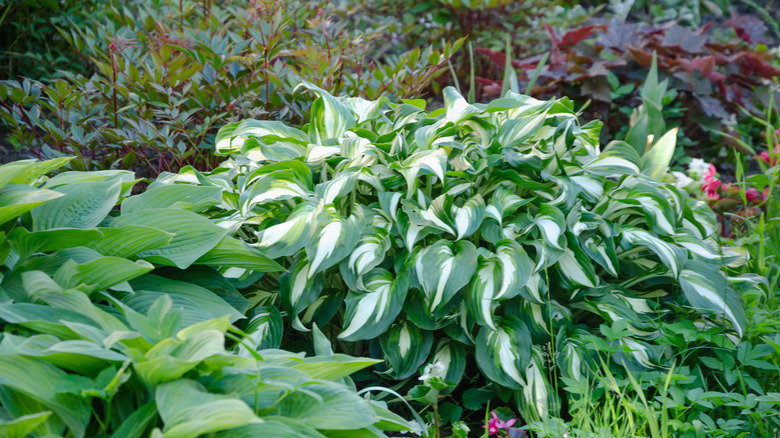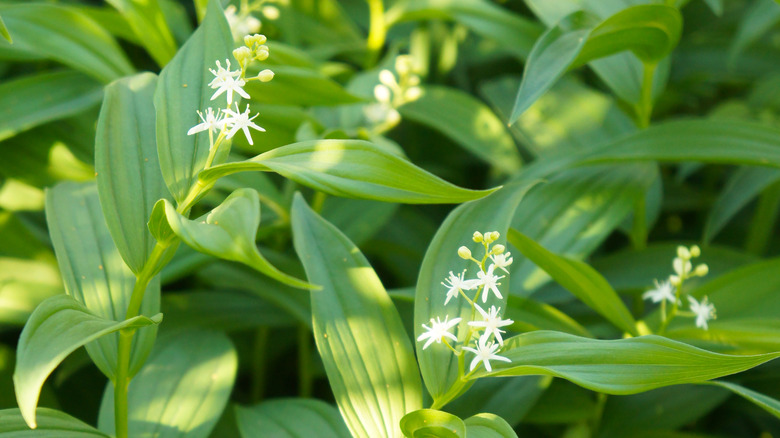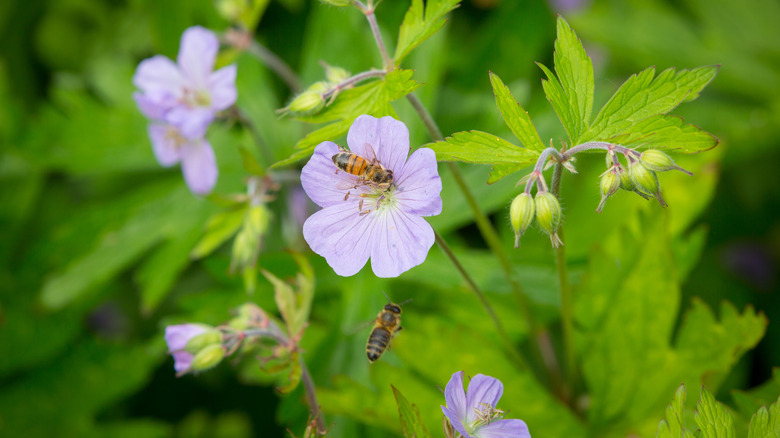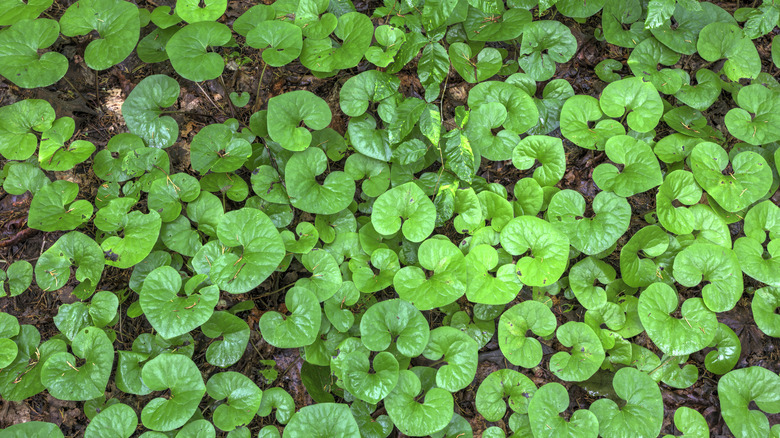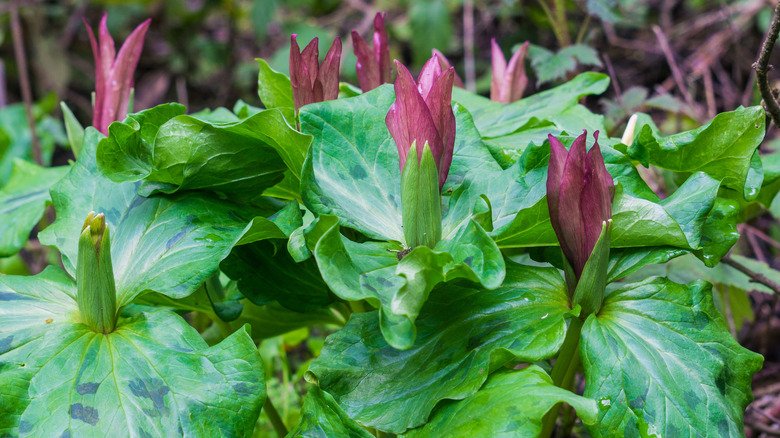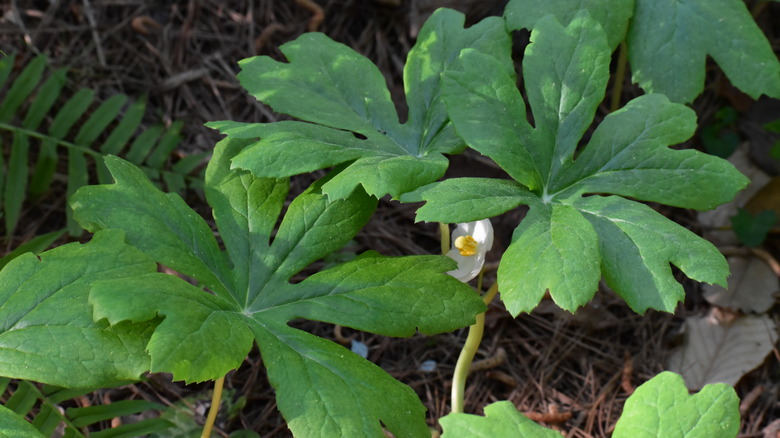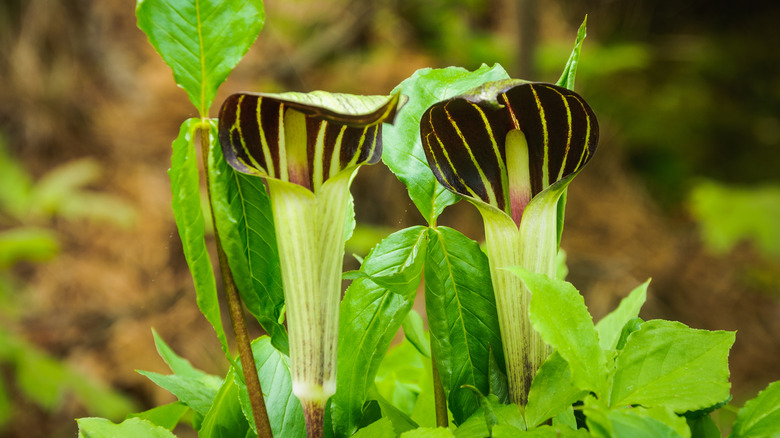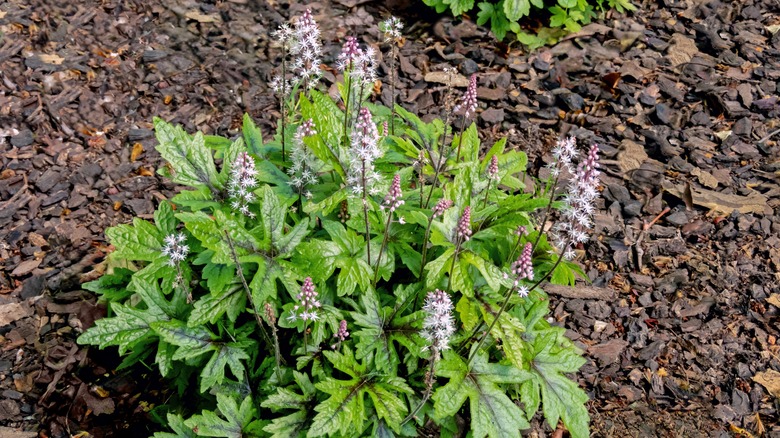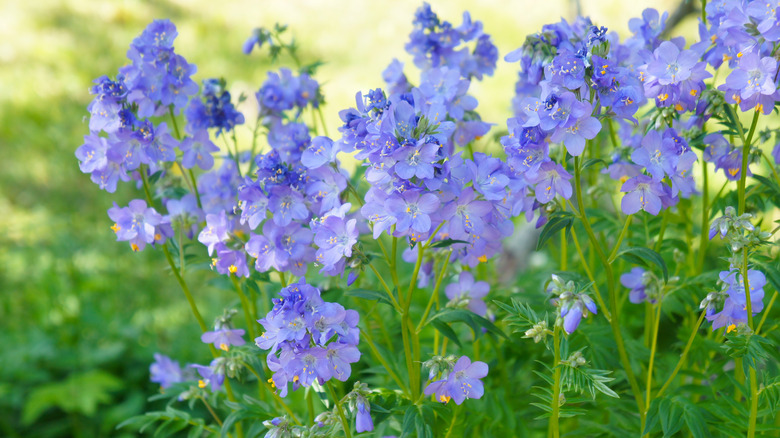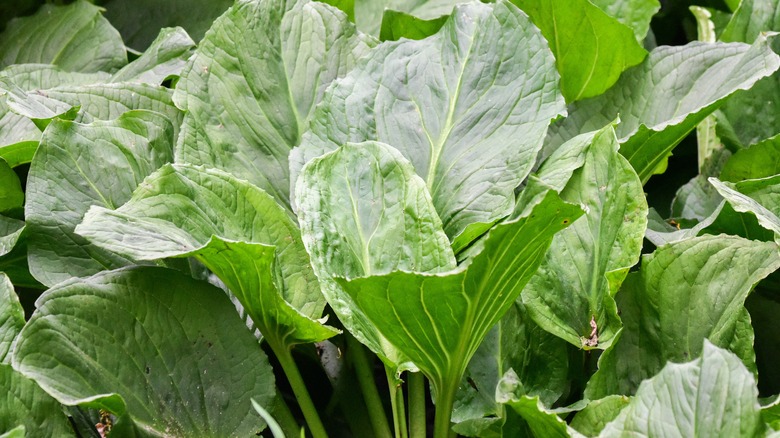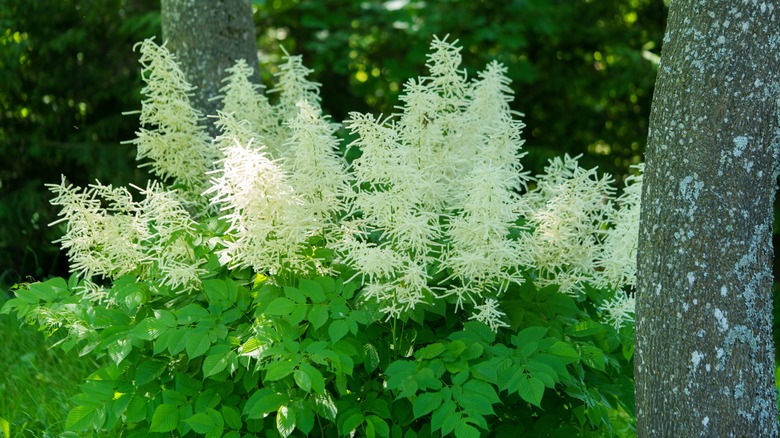10 Good Alternatives For Temperamental Hostas In The Garden
You've seen hostas in a neighbor's garden and love the way they look. It's time to plant a few of your own — or is it? You see, there are in excess of 6,000 different types of hostas, and they can come with a bevy of problems. If you've got hostas growing, in fact, you might already be wanting them out of your garden. Other plants, some of which flower, can offer the same type of lush greenery without as many woes, including Jack in the pulpit, wild ginger, and wild geranium, among several others.
Wondering more about the issues that come with hostas? Some are tolerant to the sun, but many do much better in shady areas so if you don't plant carefully, you'll regularly have scorched leaves. If you have deer, rabbits, or voles on your property, planting hostas is like inviting them to a yummy salad bar. Certain insects, including slugs and snails, find them to be irresistible, too, so diligence with pest control is a concern. The issues temperamental hostas dole out are indeed enough to make a gardener rethink planting them. To give you a hand with alternatives, we've come up with a list of 10 native plants to consider as you're planning the next steps for your garden. Some of them are even deer and rabbit resistant as a bonus.
1. Starry Solomon's Plume
This plant, native to North America, is sometimes called Starry False Solomon's Seal. It offers rich green foliage along with small, white star-shaped flowers that grow on stalks in the late spring to early summer. This hardy perennial tops out at about 1 to 2 feet tall and spreads easily; it can get a bit weedy if left untended, so keep that in mind. However, Starry Solomon's Plume grows well in many settings, including full sun and in all but the deepest of shady areas, making garden placement less of an issue in comparison to hostas.
2. Wild geranium
This hardy flowering plant is often found growing freely in untamed woody areas in zones 3 to 8 in the eastern part of North America. Also known as alum root or cranesbill, it can be added to gardens as an ornamental plant. One of the advantages of planting wild geranium is a proliferation of pink to purple blooms in the late spring to early summer. It will grow in partial shade, but blooms more readily in the sun. After it flowers, the remaining green foliage can be shaped to your liking as ground cover.
3. Wild ginger
Since they're not attracted to it, this is one of the plants you'll love as a hosta alternative if you have deer frequenting your yard. Wild ginger grows in wooded areas in a wide swath of Canada and the United States, so it makes an excellent ground cover plant in the shade. These plants flower under the leaves, so they're known for an abundance of green foliage akin to the Sun Mouse variety of hosta rather than their blooms. You can expect a colony of wild ginger to swell in size by about 6 to 8 inches every year.
4. Giant trillium
Giant trillium is another addition to a native garden that deer won't touch. Part of the lily family, this plant is also known as giant wakerobin. It is found growing wildly west of the Rocky Mountains. Producing leaves 7 to 8 inches long and flowers ranging from deep red to white, the combination is striking. One challenge with giant trillium is finding commercially propagated plants available since they take five years or so to grow big enough to flower. Giant trillium also goes dormant and retreats beginning in the summer, so that's another issue to keep in mind.
5. Mayapple
Growing mayapple offers a spring ground cover alternative for areas where deer and rabbits frequent since they won't eat them. They can also be planted under black walnut trees since they are tolerant to juglone (a walnut-based chemical that can be toxic to other plants). Mayapple grows in much of the eastern United States in zones 3 to 8. These shade-lovers go dormant in the summer, though, so plant them knowing you'll have gaps in your landscaping as the weather warms. Also keep in mind that all parts other than the fruit of a mayapple plant are highly toxic.
6. Jack in the pulpit
This is another beautiful flowering plant you need to know about if you're interested in adding native species to your garden. These interesting — almost tropical-looking – plants that love shade and very moist soil are found growing over the eastern half of North America. In female flowers, the "Jack" is a flowering spike while the "pulpit" is a shade-providing hood that grows around it. As the flowers mature, they form red berries that can be harvested for seeds and propagated. The berries do tend to irritate skin, however, so be sure to wear gloves when handling them.
7. Foamflower
This perennial flowering plant is known to grow in forests and is hardy to zone 4. It grows in shade but has been known to thrive in partial shade as well. Foamflower produces spikey flowers in the spring and early summer that range in color from pink to white. After they wither, the attractive variegated leaves provide ground cover through the fall when they turn a vivid red hue. Foamflowers grow well in evenly watered garden beds and can be propagated from seed without too much fuss or by dividing plants as they mature.
8. Jacob's ladder
A member of the phlox family, this flowering perennial is at home in gardens with soils that drain well. Jacob's ladder can grow in full sun, shade, or partial shade making it a versatile choice for a cottage or native garden in the eastern half of the United States. A bevy of blue to purple blooms adorn Jacob's ladder in the late spring and early summer months, drawing both butterflies and pollinators like bees. When the flowers fade, attractive fern-like foliage is left behind to further beautify a garden.
9. Skunk cabbage
You may have to get past the name (and the smell!) to appreciate this leafy green plant as an alternative to hostas. They're native to both the Pacific Northwest and the eastern part of the United States and grow well in wet soil in shady to sunny areas. When these plants emerge in the spring, a spadix enclosed in a spathe appears before its large leaves begin to unfurl. And yes, when they're bruised, skunk cabbages can give off a foul odor. However, they're deer-resistant, so besides looking good, that's yet another redeeming quality of skunk cabbage.
10. Goat's beard
This is another perennial that's both rabbit and deer-resistant if that's one of your main issues with growing hostas. It has cream-colored feathery spikes of eye-catching flowers that can be used in cut flower arrangements. Native to the Mid-Atlantic and Midwestern areas of the United States, goat's beard typically grows in zones 4 to 8. Plan to plant it in partial shade or give it extra water in full sun. Other than that, goat's beard is an easy-to-maintain selection for a native plant garden.

